<img src=’https://cdn.finestresullarte.info/rivista/immagini/2018/821/giulio-turcato-senza-tempo.jpg’ ’ alt=“Giulio Turcato, Senza tempo (1989; oil, sands and mixed media on canvas, 80 x 100 cm)” title=“Giulio Turcato, Senza tempo (1989; oil, sands and mixed media on canvas, 80 x 100 cm)” /></td></tr><tr><td>Giulio Turcato, Senza tempo (1989; oil, sands and mixed media on canvas, 80 x 100 cm)</td></tr></table></p> <p><strong>3. Mazzoleni’s entire booth</strong><br /> De Chirico, Paolini, Manzoni, the Spatialists: a refined layout in shades of gray, lots of space for the works, museum-like atmosphere. <strong><a href=’http://www.mazzoleniart.com’ target=’_blank’>Mazzoleni</a></strong>’s booth allows visitors to take a journey through the most sophisticated art of the 20th century.<br /><br /> <table class=’immagini-ilaria’><tr><td><img src=’https://www.finestresullarte.info/review/images/2018/821/stand-mazzoleni.jpg’ alt=“A portion of Mazzoleni’s booth” title=“A portion of Mazzoleni’s booth” /></td></tr><tr><td>A portion of Mazzoleni’s booth</td></tr></table></p> <p><strong>4. The kinetic art of 10 A.M. - Amart Gallery
The booth of 10 A.M. - Amart Gallery is all about optical and kinetic art, the true specialty of the Milanese gallery, which also brings to Bologna works by Marina Apollonio, Giovanni Pizzo, Marcello Morandini, and others concentrated mainly in a period from the 1960s to the 1980s.
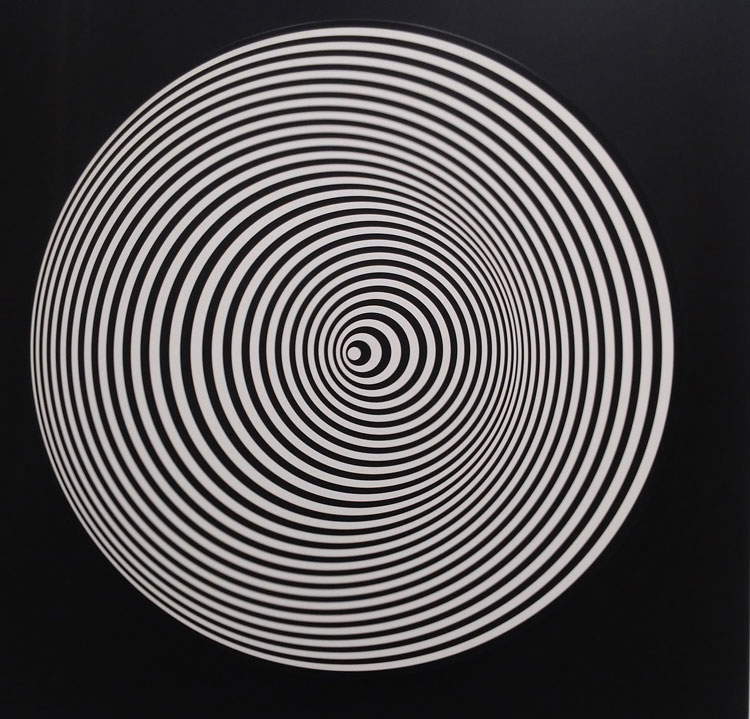 | | Marina Apollonio, Circular Dynamics 6 S+S (1966; enamel on wood and motorized rotating mechanism, diameter 80 cm) |
5. Sironi’s works at Galleria Cinquantasei’s booth.
Galleria Cin quantasei offers a focus on the figure of Mario Sironi (Sassari, 1885 - Milan, 1961). On display are mainly drawings, gathered in a small exhibition entitled Sironi. Works 1920 - 1950. And to open, a huge cartoon (measuring 340 x 230 cm) depicting Justice and Law, made for the mosaic L’Italia corporativa (1936-1937) that was to decorate the Palazzo dell’Informazione in Milan.
| <img src=’https://cdn.finestresullarte.info/rivista/immagini/2018/821/sironi-giustizia-liberta.jpg’ alt=“Mario Sironi, La Giustizia e la Legge (1936-1937; mixed media on paper from <a href=”https://www.finestresullarte.info/opere-e-artisti/la-tecnica-dello-spolvero“>spolvero</a> applied on canvas, 340 x 230 cm)” title=“”Mario Sironi, La Giustizia e la Legge (1936-1937; mixed media on spolvero paper applied on canvas, 340 x 230 cm)“ /></td></tr><tr><td>”Mario Sironi, La Giustizia e la Legge (1936-1937; mixed media on spolvero paper applied on canvas, 340 x 230 cm) |
6. Marino Marini da Guastalla
Arte Fiera cannot miss the artist of the moment, Marino Marini (Pistoia, 1901 - Viareggio, 1980), never so much the focus of critical attention as in recent times. Guastalla brings to Bologna several works by the Pistoiese artist, including a large plaster sketch executed for the Arengario in Milan, already exhibited in 2006 at the exhibition on Marino Marini’s horses and riders at the Palazzo del Tau in Pistoia.
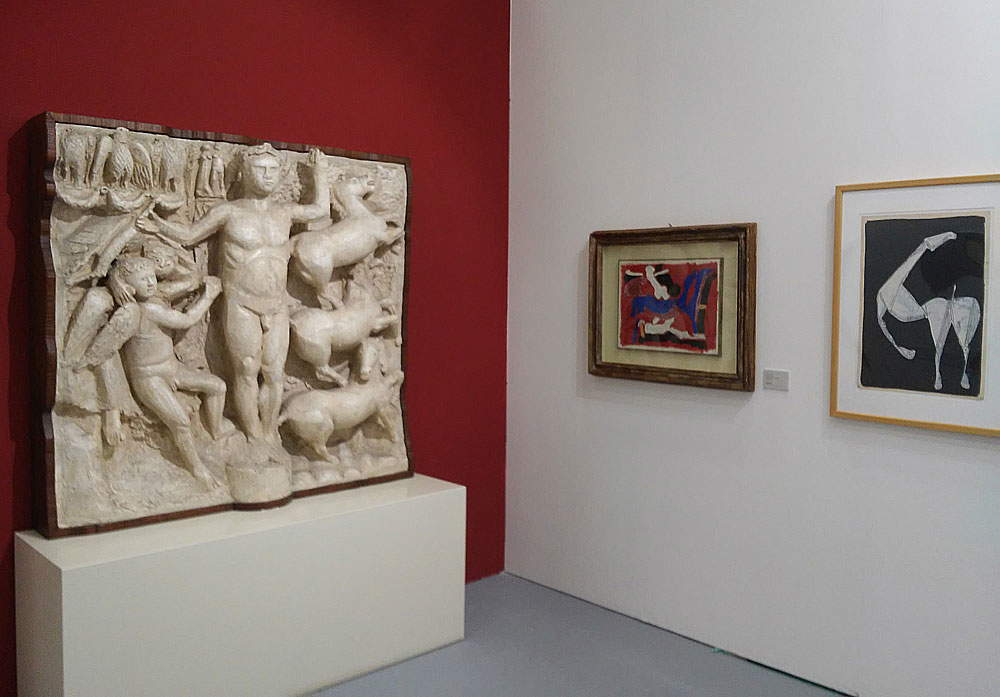 | | Marino Marini’s works at the Guastalla booth. |
7. Master Drawings at Torbandena
The Torbandena Gallery offers an in-depth look at drawings by the great masters of the 20th century: Pablo Picasso, Joan Miró, George Grosz, Paul Klee, Henry Moore, Alexej von Jawlensky and others. The small exhibition is entitled Master Drawings and is definitely a spot to circle on one’s pavilion map.
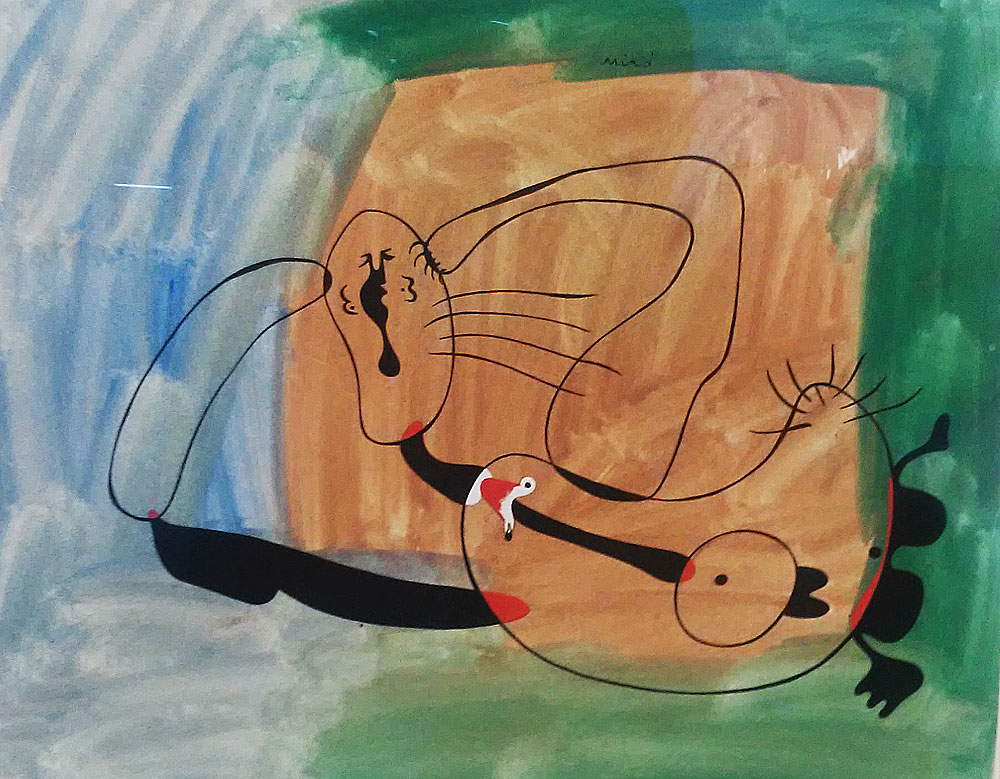 | | Joan Miró, Dormeuse (1935; gouache, watercolor and ink on cardboard, 30.5 x 36.8 cm) |
8. All Robert Indiana at Contini’s
Contini dedicates a booth to the figure of Robert Indiana (New Castle, 1928), one of the most distinguished exponents of pop art, famous for his Love and Hope. Also interesting is the booth layout that is sure to captivate pop art lovers.
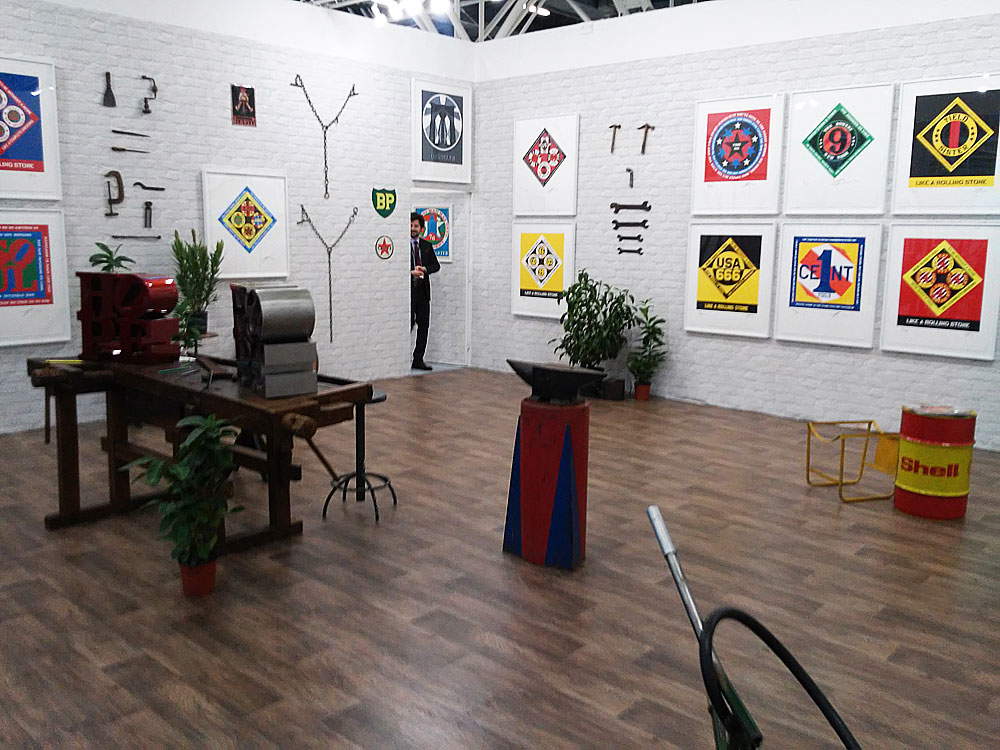 | | Robert Indiana at Contini’s booth |
9. Futurists’ drawings before futurism at Russo’s booth.
At Russo’s booth, four splendid drawings by as many masters(Umberto Boccioni, Gino Severini, Giacomo Balla, Duilio Cambellotti) in a small but intense look at what the Futurists were doing before Futurism: one thus discovers a language still imbued with the Divisionist lesson with, as a counterbalance, Cambellotti’s La falsa civiltà (False Civilization ) idealizing country life against the myth of progress that would soon fascinate Boccioni and co.
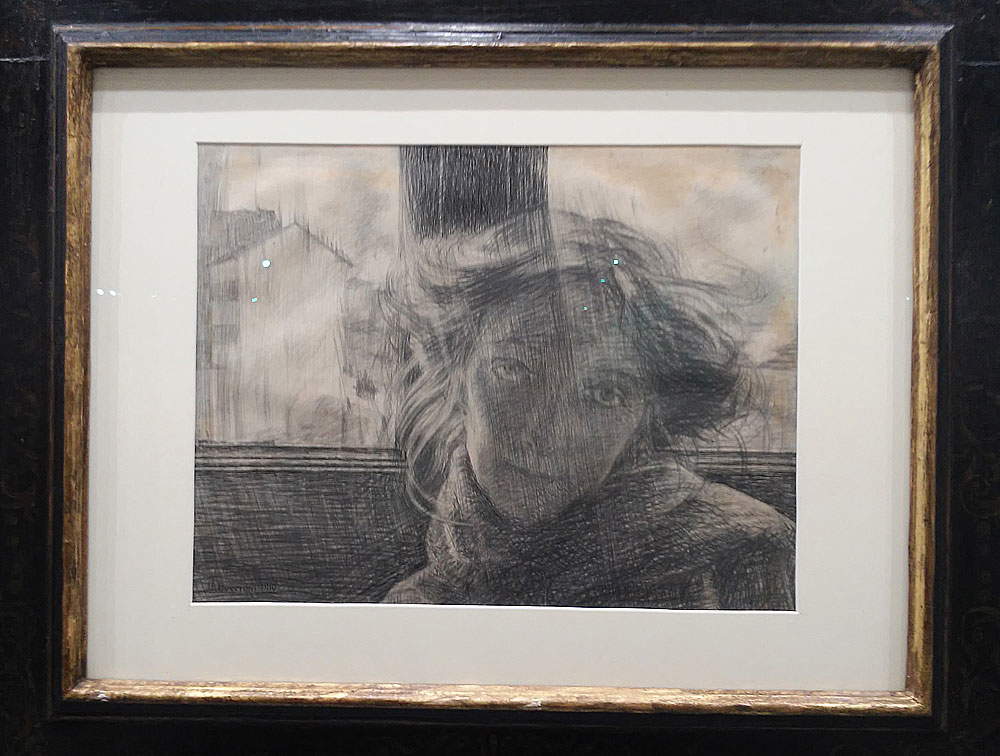 | | Umberto Boccioni, Controluce (1910; pencil and ink on paper, 36 x 49 cm) |
10. The twentieth century at Tornabuoni’s
Roberto Casamonti, patron of Tornabuoni Arte, will soon open an exhibition space in Florence where he will display masterpieces from his own collection, which will be free for the public to visit: while you wait, and to get a taste of what we will see at Palazzo Bartalini Salimbeni, you can stop by Tornabuoni’s booth. Don’t miss the Lucio Fontana cuts.
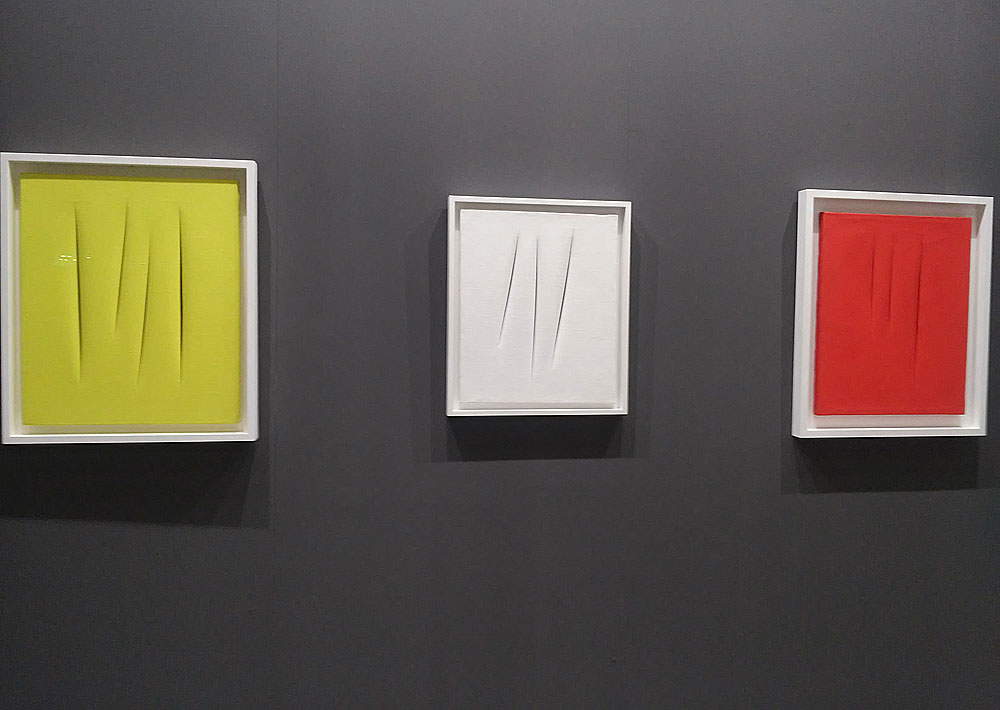 | | Lucio Fontana’s cuts at Tornabuoni’s |
|

































